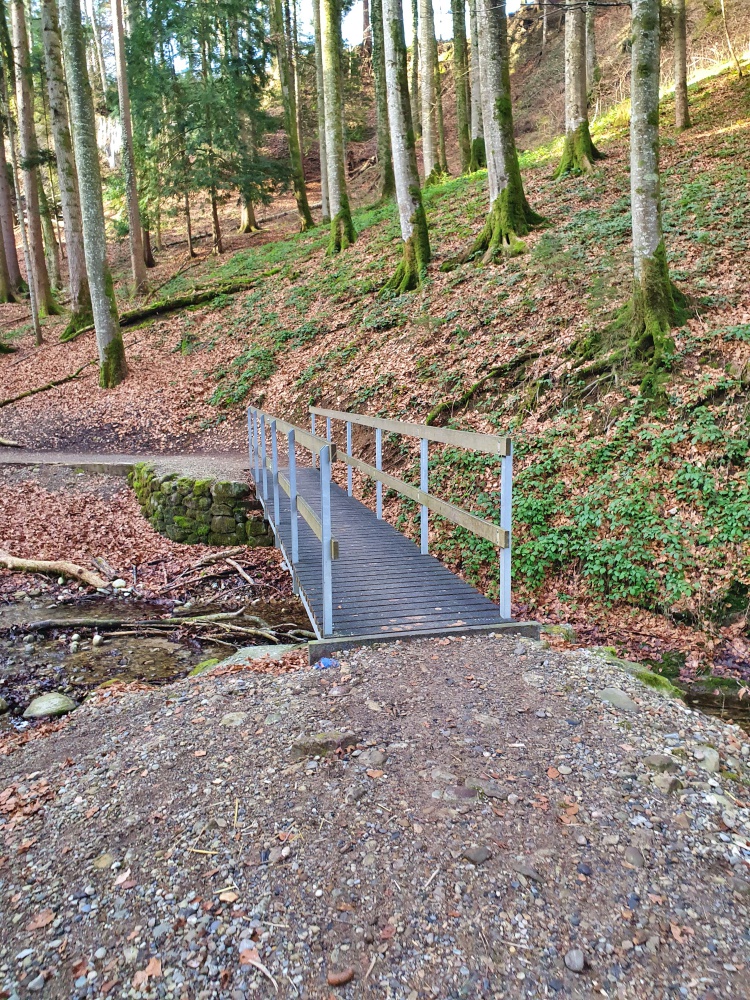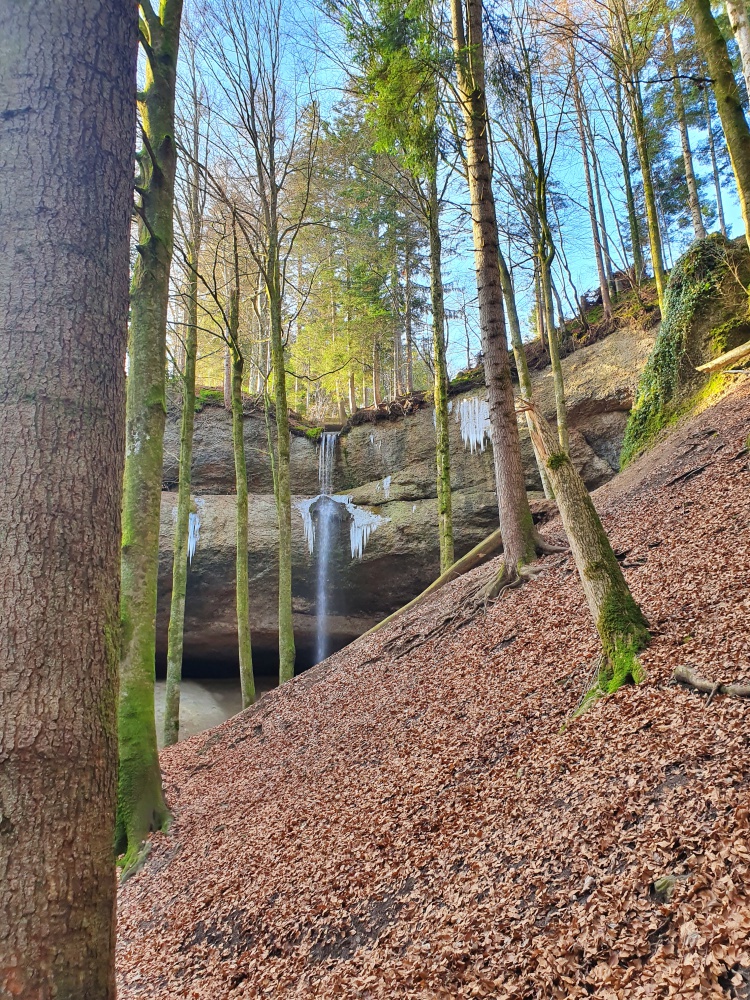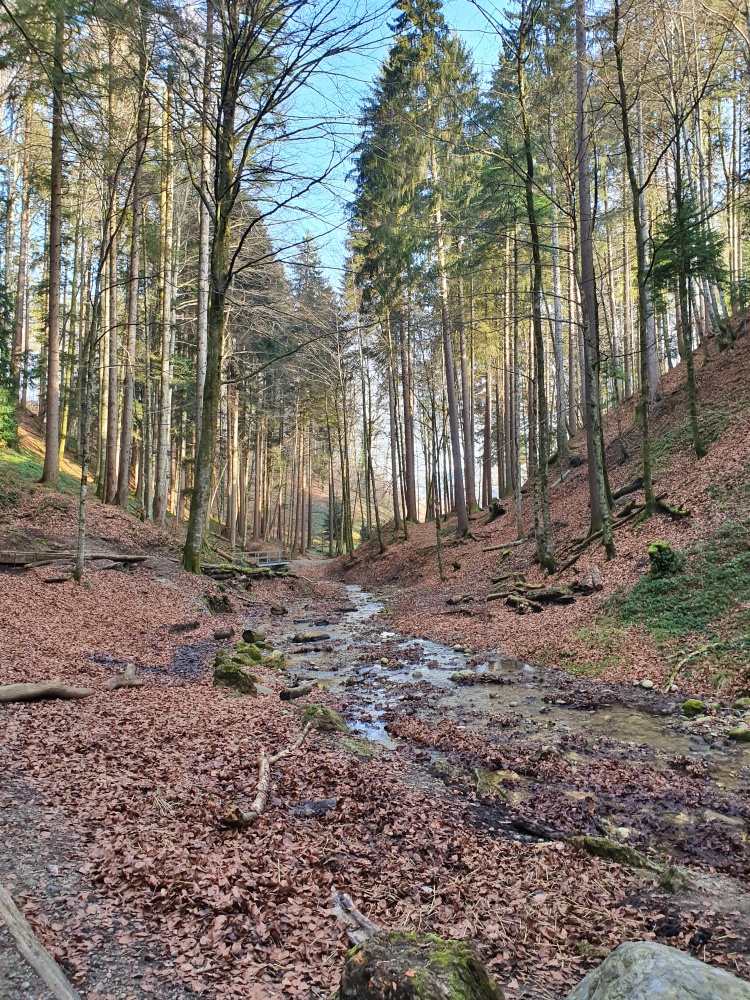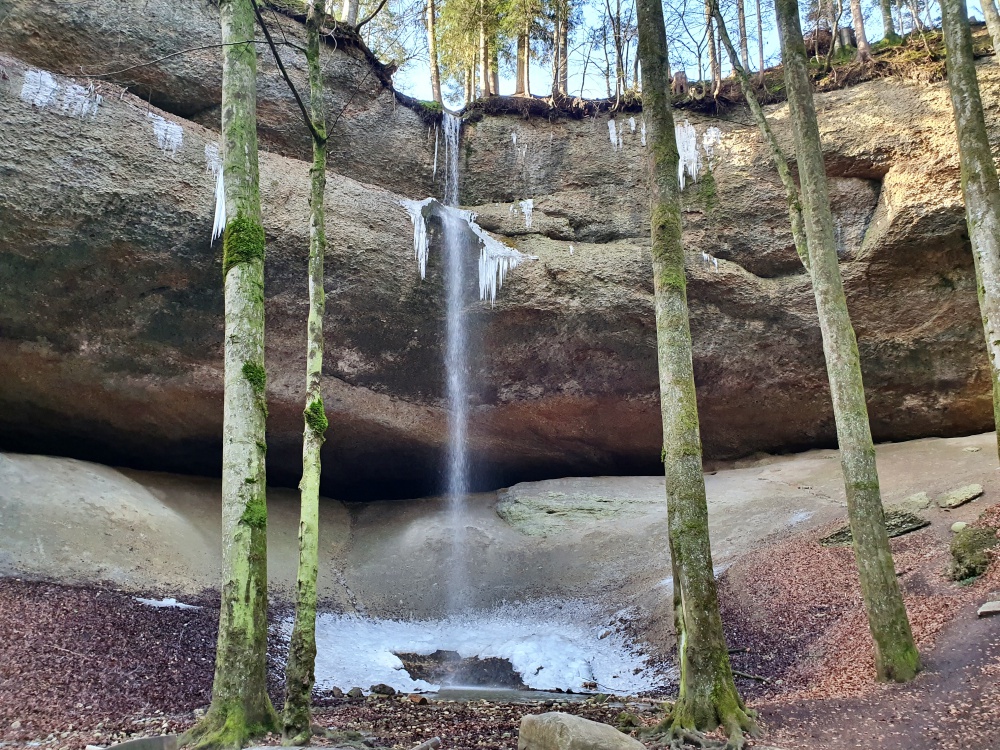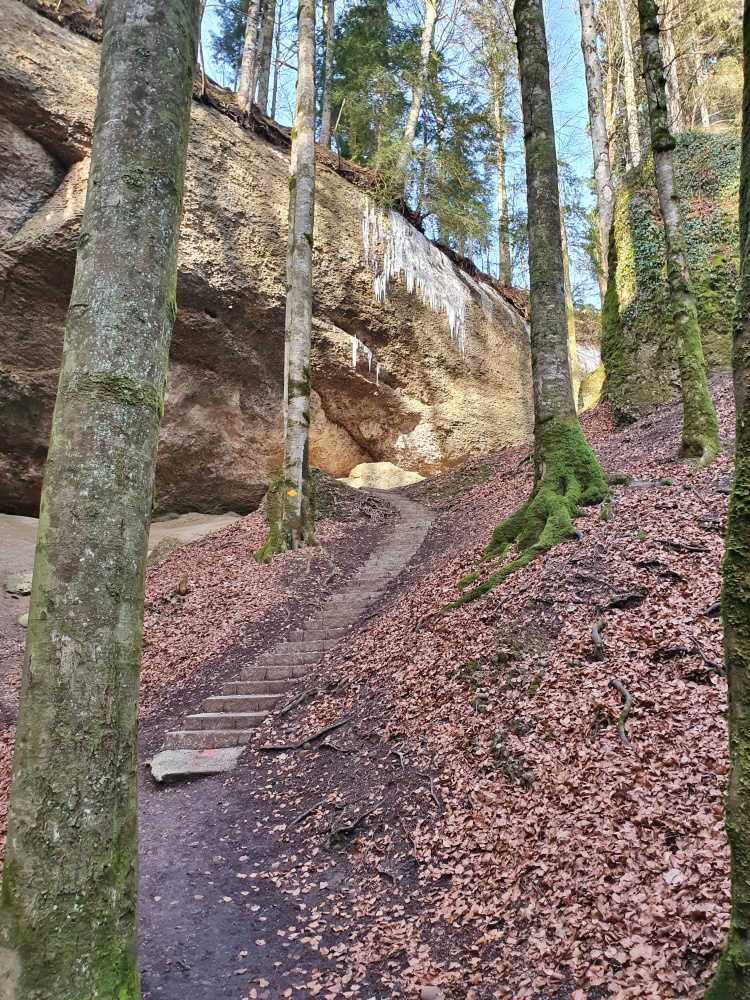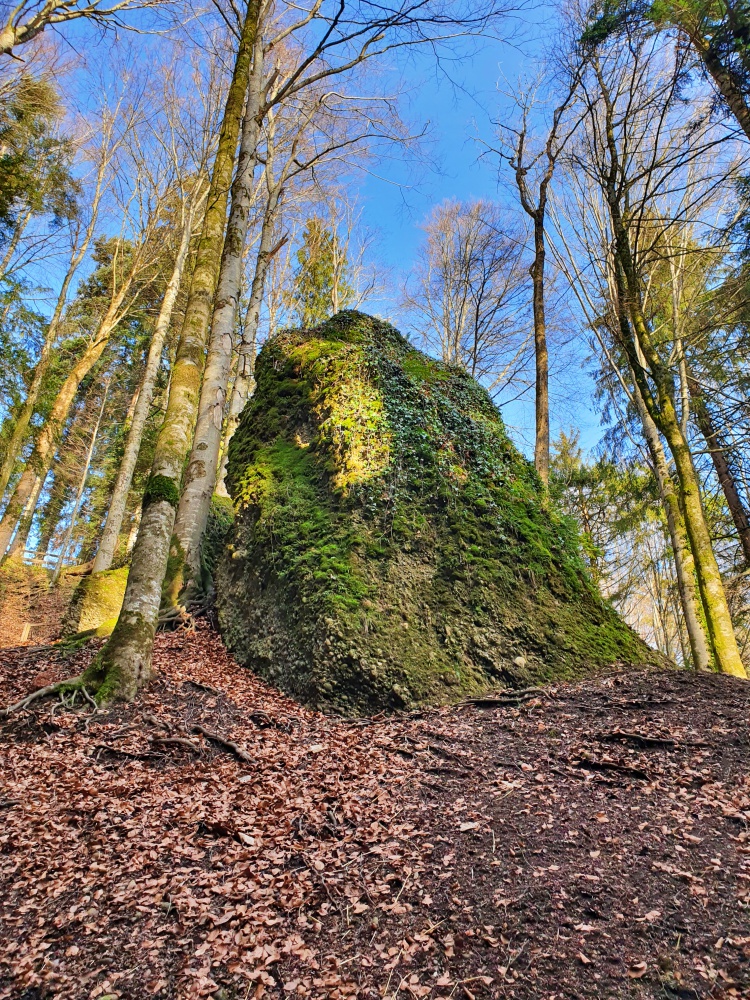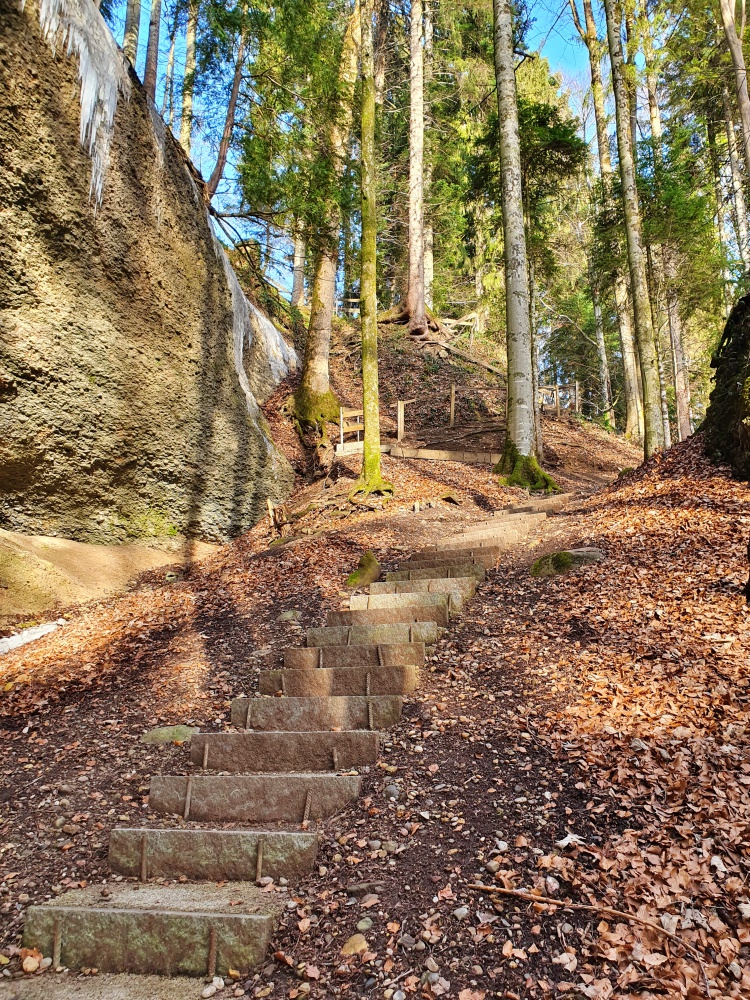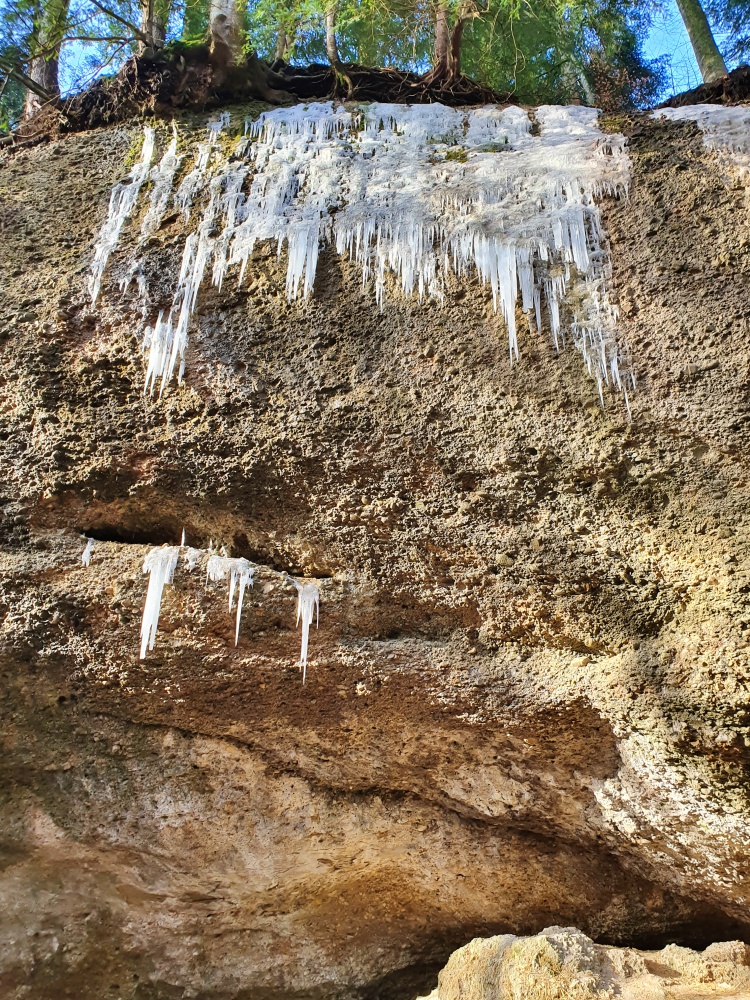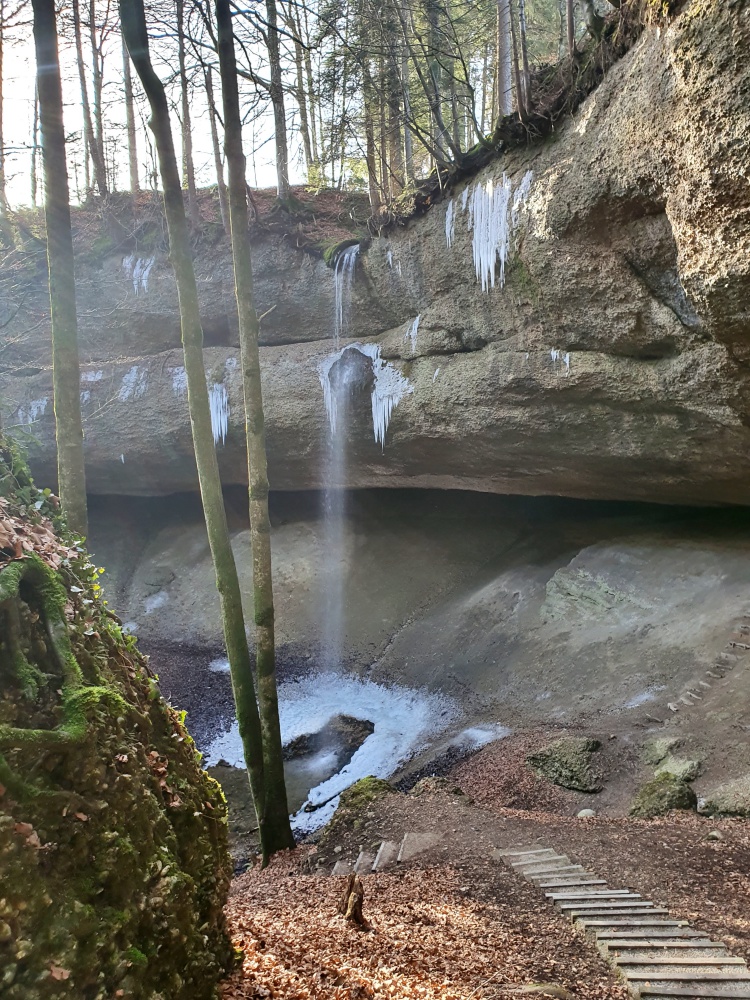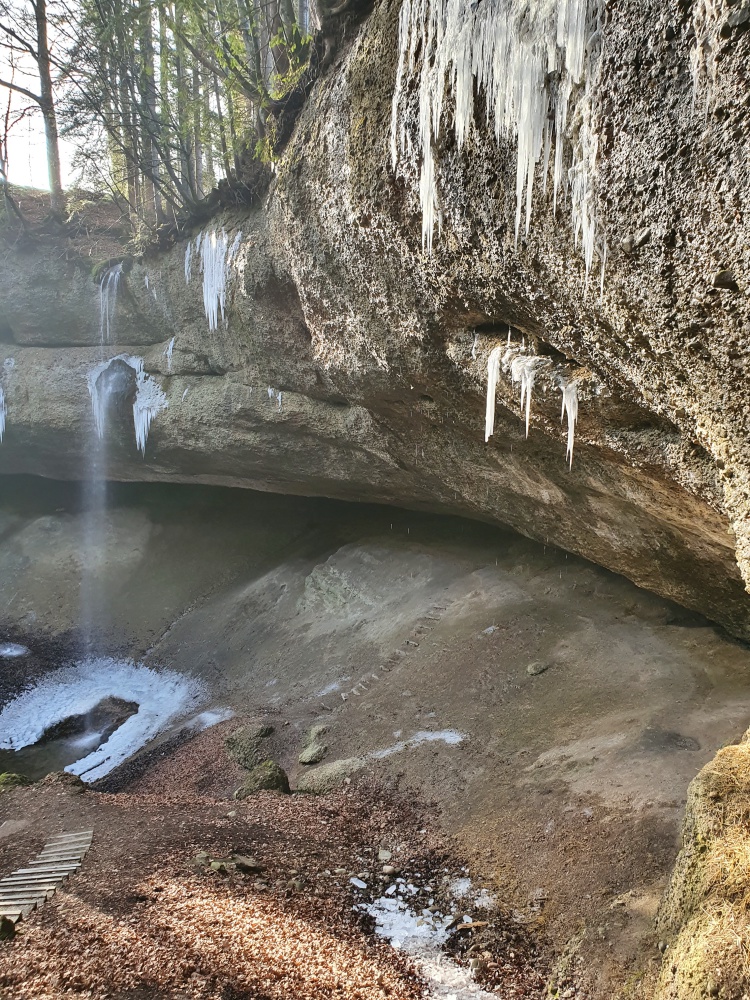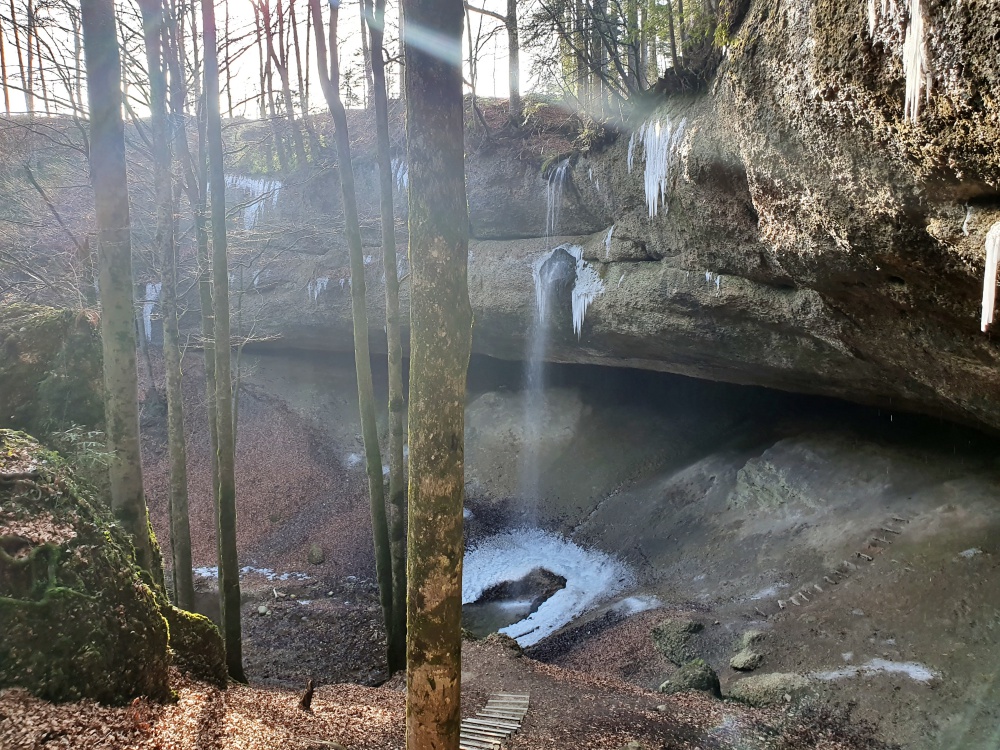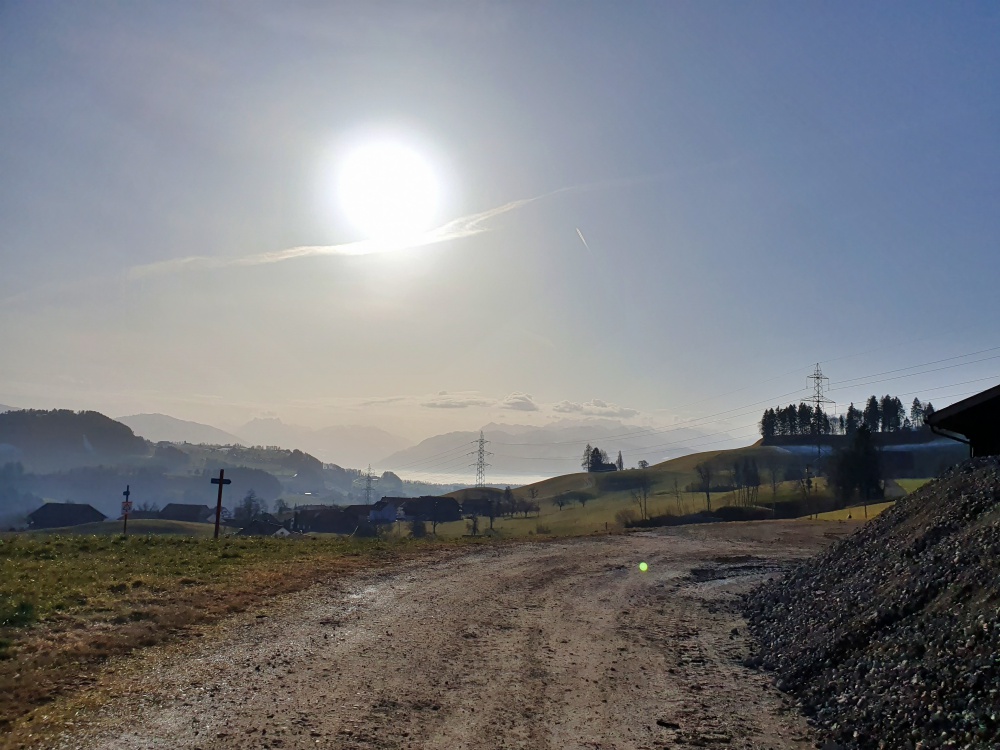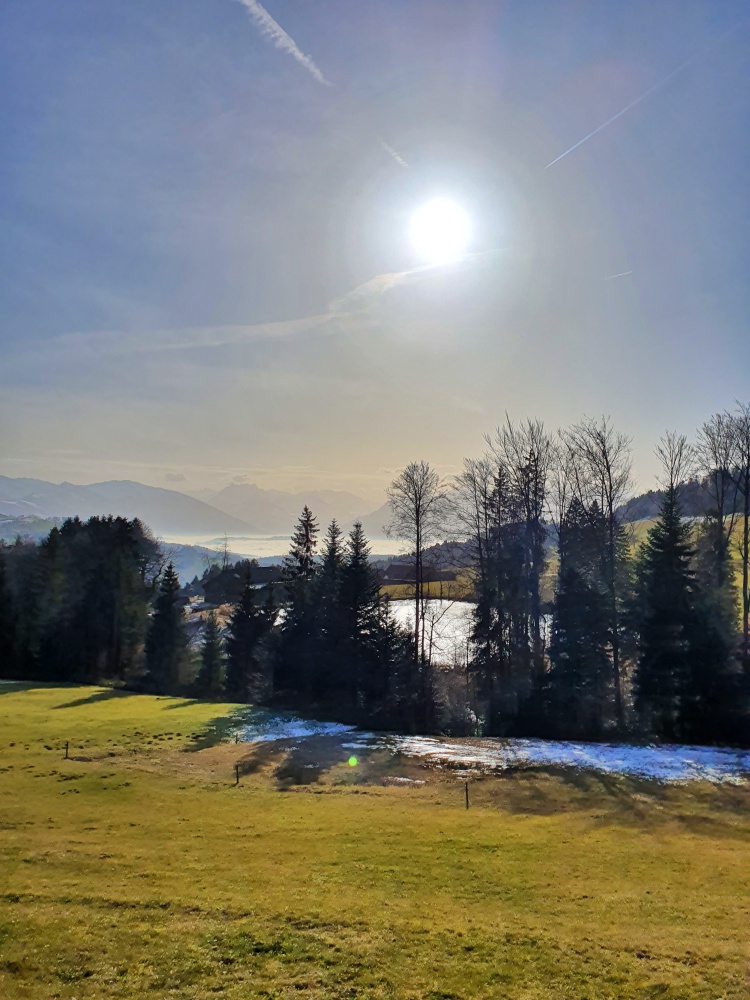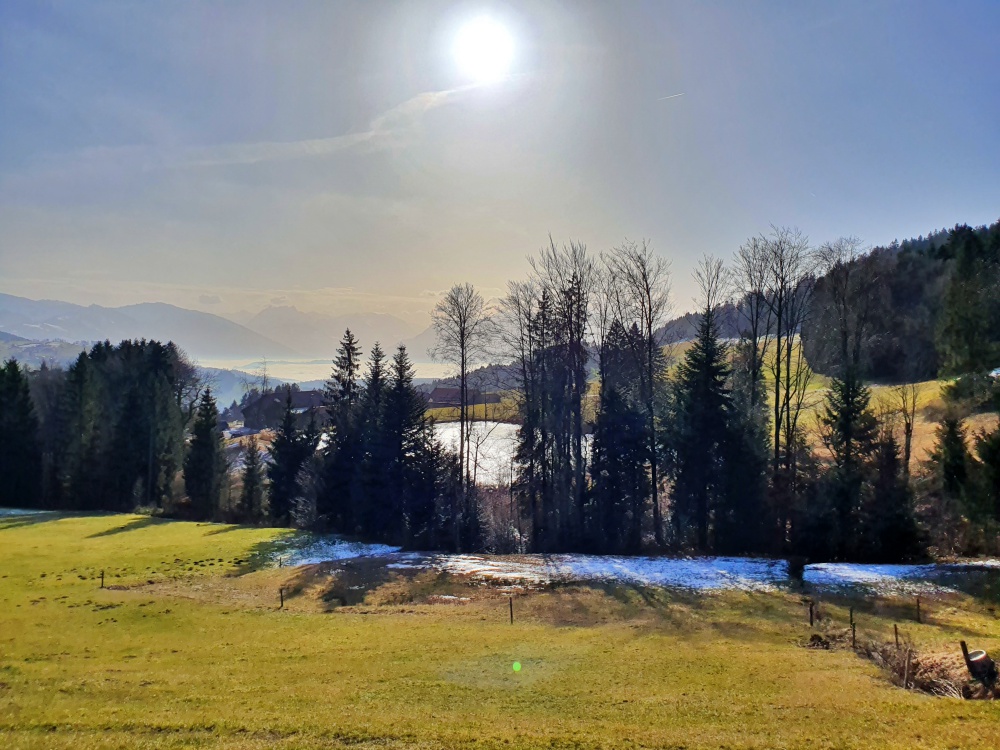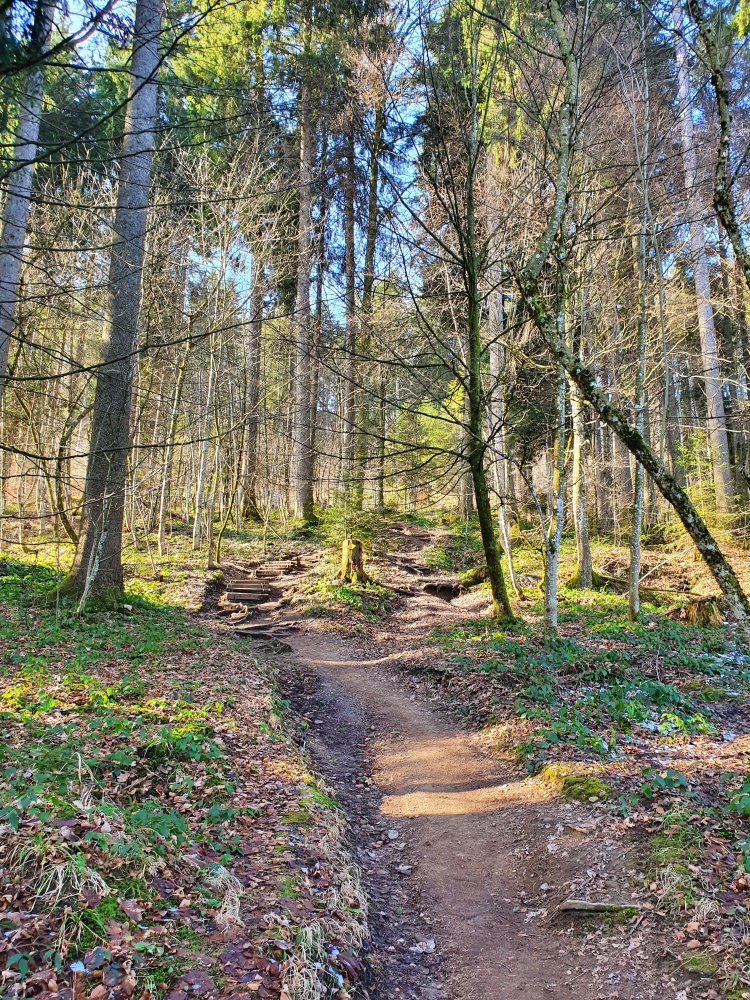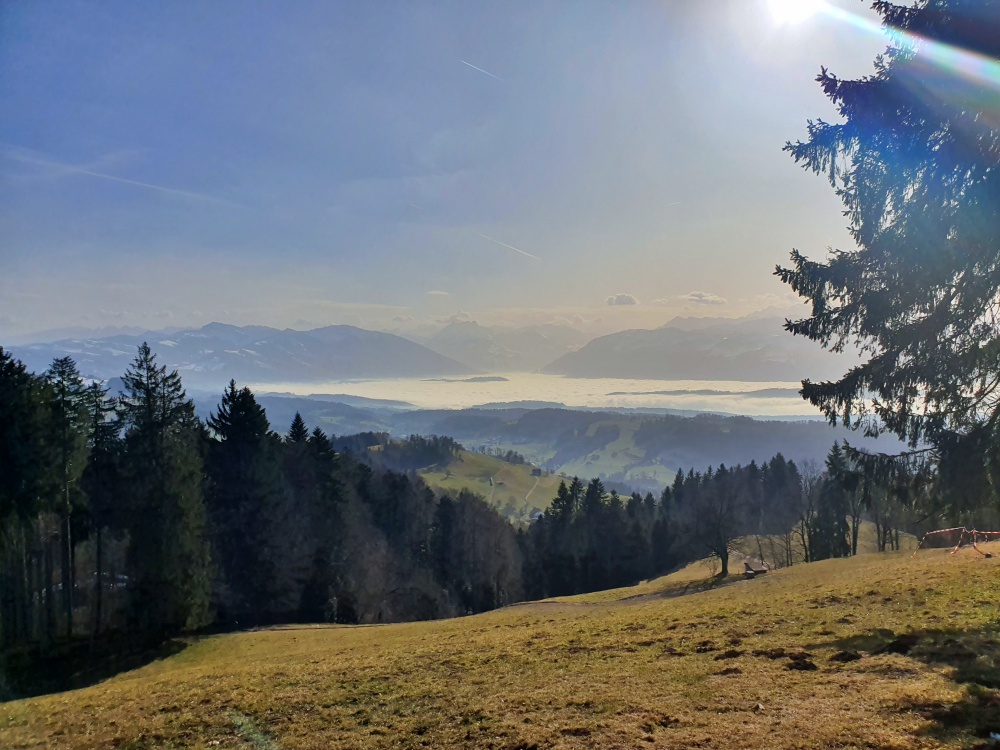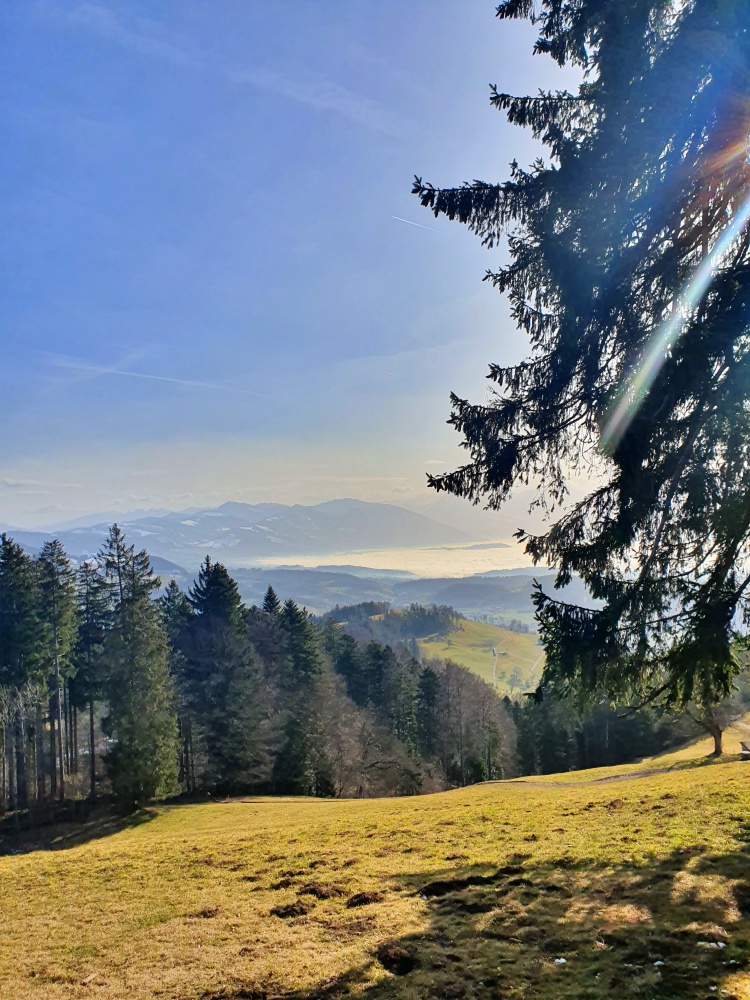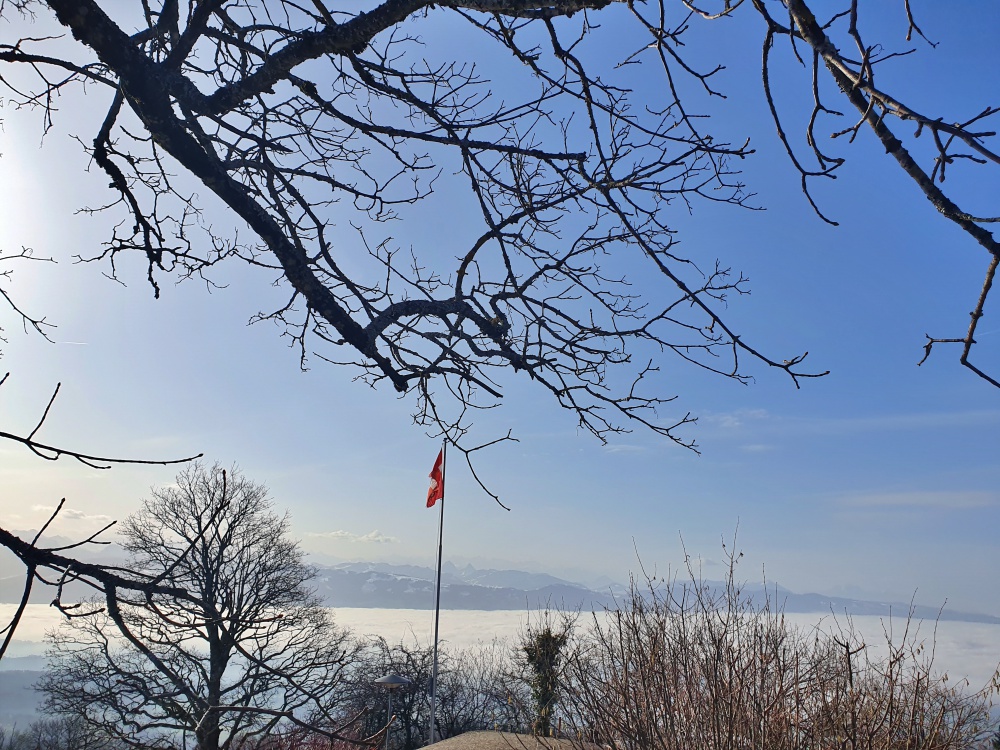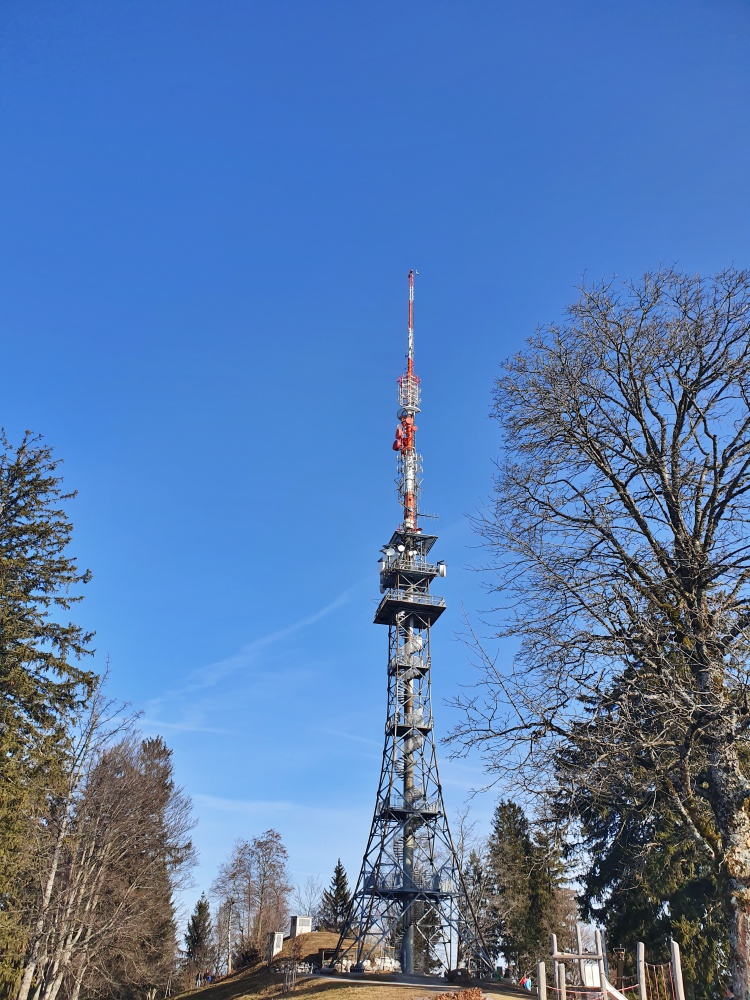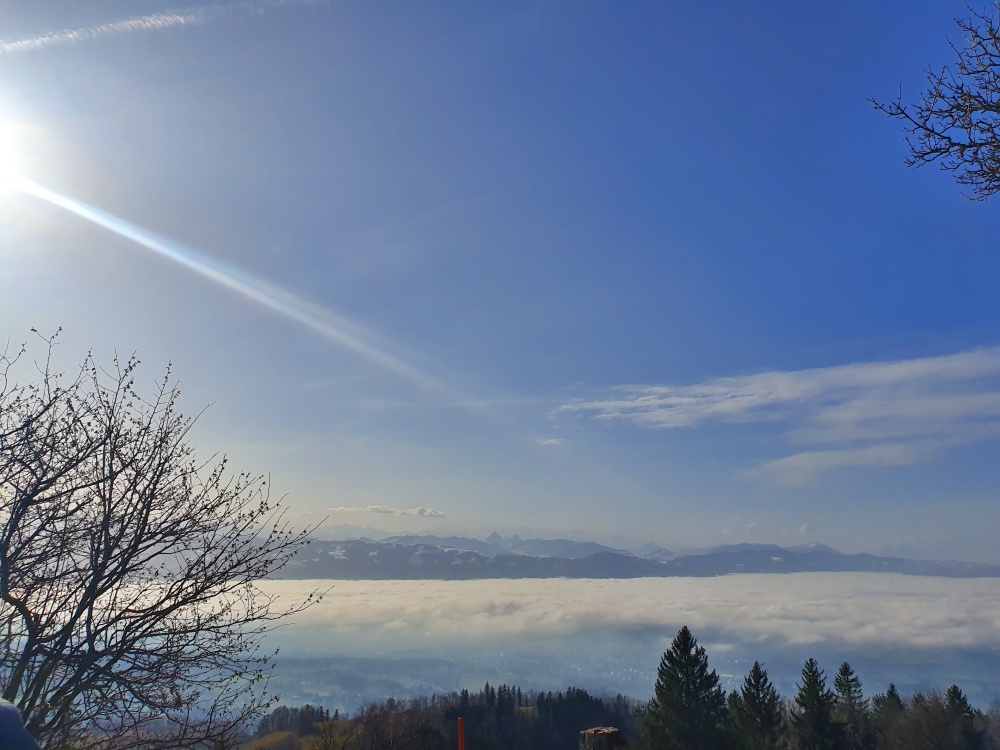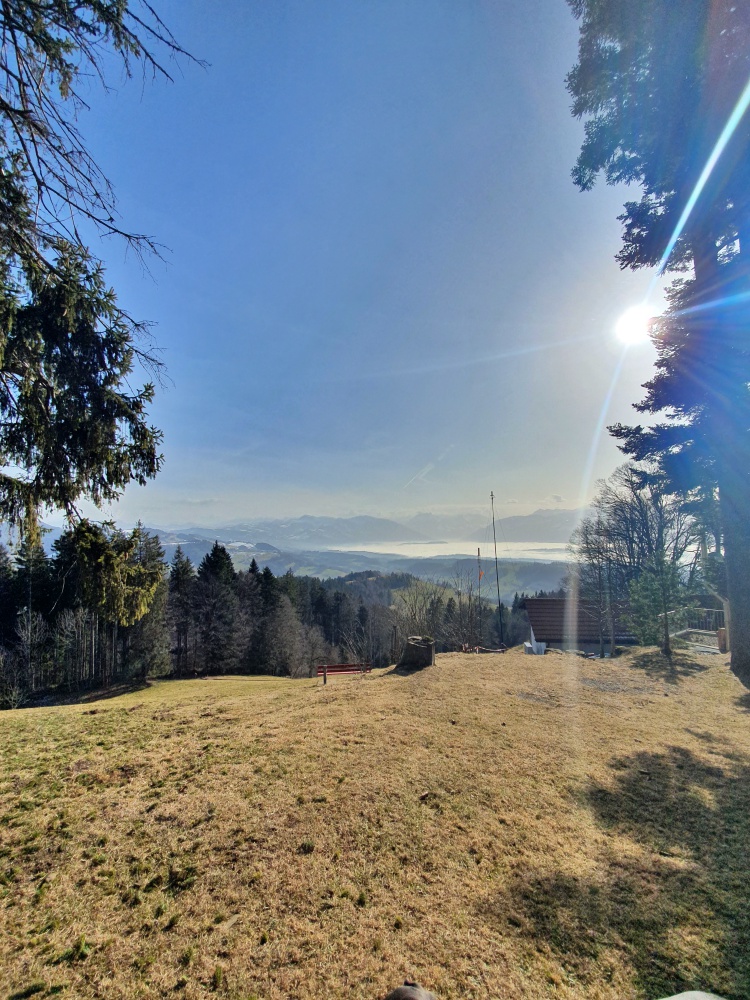After a few meters, the path branches off from the car park in Ried into a ravine where rocks tower up as if from nowhere. Hikers can easily cross the Wissenbach stream over a bridge before discovering the rocks, the waterfall and finally the cave.
In the hot summer it is particularly cool here, so that the place has become a popular picnic spot. But even in winter, when the icicles stretch down the rocks and the waterfall forms a horseshoe of ice at the bottom, the place's stirring scene reveals itself in a special way.
The entire structure is about 30 m high, with a waterfall splashing down into the valley in the middle. On one of the flanks you can climb up to a platform from which you have a wonderful view of the idyllic valley. The cave behind the waterfall is partially covered with straw, so you can also lie down and bivouac. Right at the foot of the waterfall there is a small pool of water, which offers a welcome cooling off on hot summer days.
hikes
First, you go along the Jakob Keller path into the valley. Anyone who makes the effort and climbs towards Vorder Sennberg up to the Bachtel will be rewarded with a unique panoramic view. There is an observation tower on the Bachtel that offers a view of the Glarus, Central Swiss and even Bernese Alps. Between Töss and Glatt, the Bachtel is the highest elevation at 1115 m above sea level.
legend
At the foot of the Bachtel, in the area of the municipality of Hinwil, a spring arose whose groundwater contained sulphur. This sulphur water was fed into the Gyrenbad, which enjoyed a good reputation as a health resort until the turn of the century. Heinrich Bullinger praised this healing spring as early as the 16th century, and the Zurich city doctor Johann Jakob Scheuchzer described it in detail at the beginning of the 18th century. How the healing power of this water was discovered and how the spa got its name is described in various ways.
A farmer was once working in his fields at the foot of the stream when he suddenly heard a cawing and a wing flapping in the bushes. As he went to the bush, he saw a vulture with its wings caught in the branches. One of the bird's legs seemed to be injured. The farmer freed the bird of prey's wings from the branches, the animal rose and flew away, cawing. The vulture alighted on the edge of a nearby stream and drank. As it could not stand well, it slipped and fell into the water, but soon managed to get up again and fluttered to the bank where it seemed to rest. The farmer, who had been watching the bird, noticed that it was suddenly perched on both legs again in the manner of birds of prey, whereas before it had stretched out one of its legs so strangely.
The farmer wondered why the vulture's injury suddenly disappeared after the bath. The animal looked around happily, drying its feathers in the sun, and when the farmer looked after it a little later, it was circling high above the forest as if it had never been injured. When the farmer had finished his work, he undressed and slipped into the stream. The bath seemed to agree with him as much as it did with the vulture, for when he got out he felt wonderfully refreshed, and on the way home he found that his back hurt much less than before.
The farmer reported what he had experienced in the village. A bathing establishment was soon built. The bath was named after the injured vulture, the "Gyr", and for a long time those affected found healing in its sulphurous water. The bath was well attended until the beginning of the last century. When the people seeking healing stopped coming, the bathing hotel was continued as an inn and is still a popular tourist destination today. The beautiful old house has been renovated, but the healing spring seems to have dried up forever.
Directions
By car, you drive to the TCS car park in Ried. By train, the waterfall is barely half an hour away from Gibswil station.




